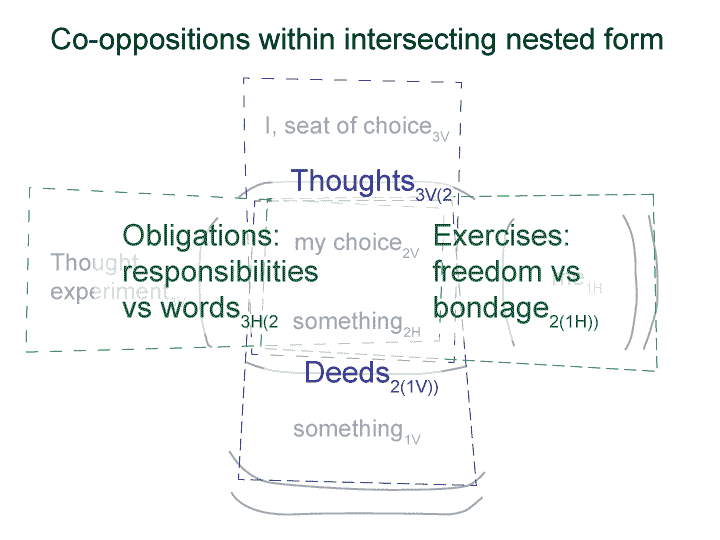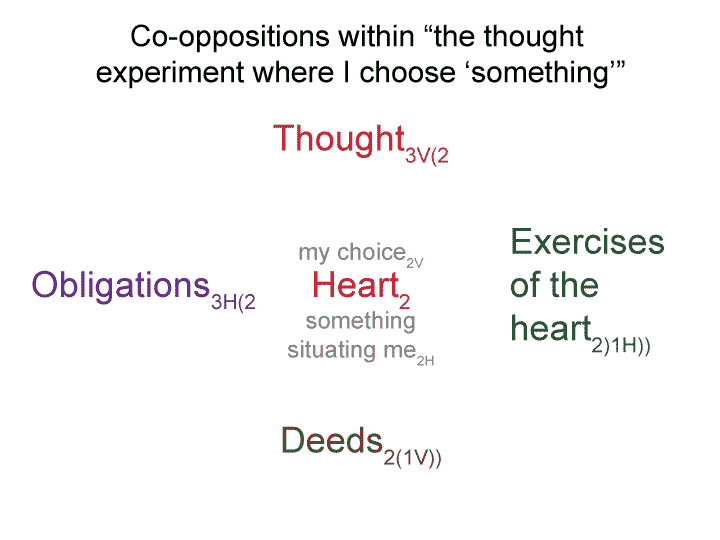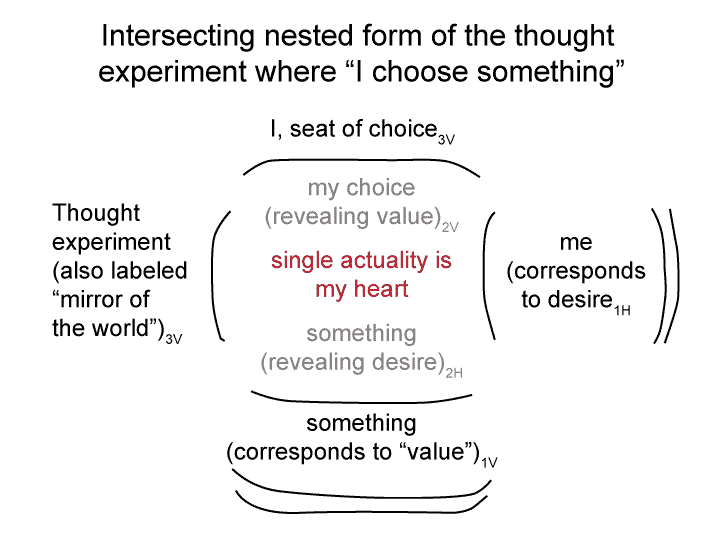Man and Sin by Piet Schoonenberg (1964) 2.3 HR
[Or, on the horizontal axis, words3H2 encompass bondage2(1H)).
Bondage2(1H)) lays the groundwork for words3H(2’.
Bondage2H(1H)) reveals desire1H.]
Man and Sin by Piet Schoonenberg (1964) 2.3 HQ
[On the vertical axis, thoughts3V(2 encompass deeds2(1V)).
Deeds2(1V)) lay the groundwork for thoughts3V(2.
Deeds2V(1V)) reveal values1V.
On the horizontal axis, responsibilities3H(2 encompass freedom2(1H)).
Freedom2(1H)) lays the groundwork for responsibilities3H(2’.
Freedom2H(1H)) reveals desire1H.]
Man and Sin by Piet Schoonenberg (1964) 2.3 HP
Summary of text [comment] page 83
[The categorical anatomy of the thought experiment of ‘I choose something’ may be portrayed as an intersection.
Two intersecting nested forms cross one another at the actuality of my choice2V and‘something2H.
It looks like a mandala of the heart2.]
Man and Sin by Piet Schoonenberg (1964) 2.3 HO
Summary of text [comment] page 83
[My heart2 is a single actuality filled with contradictions.
Yet, it obeys the laws of non-contradiction.
My heart2 cannot resolve these contradictions, because this single actuality emerges and situates two potentials.
This single actuality also is contextualized by two normal contexts.
What a mess.]
Man and Sin by Piet Schoonenberg (1964) 2.3 HL
[I label that actuality “my heart2”.
Thoughts and deeds constitute the vertical nested form.
Obligations and exercises of the heart constitute the horizontal nested form.
The interscoping content and situation levels detach from their (assumed) perspective level.
They detach as an intersection.]
Man and Sin by Piet Schoonenberg (1964) 2.3 HK
[What happens when my values1b no longer touch base with the objects that reveal my desire2a?
The ongoing interscope no longer applies.
Thoughts3b(2b and deeds2b(1b)) no longer emerge from and situate obligations3a(2a and exercises of my heart2a(1a)).
My choice2b and something (that emerges from and situates me)2a congeal into a single contradiction-filled actuality.
I label that actuality “my heart2”.]
Man and Sin by Piet Schoonenberg (1964) 2.3 HJ
Summary of text [comment] page 83
[What happens when the something underlying my choice1b no longer equilibrates to the something2a emerging from and situating ‘the potentials inherent in me1a‘?]



